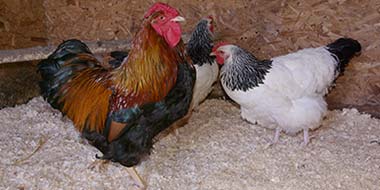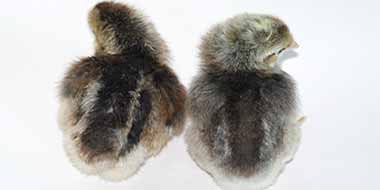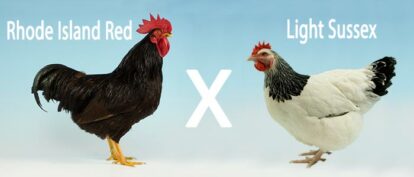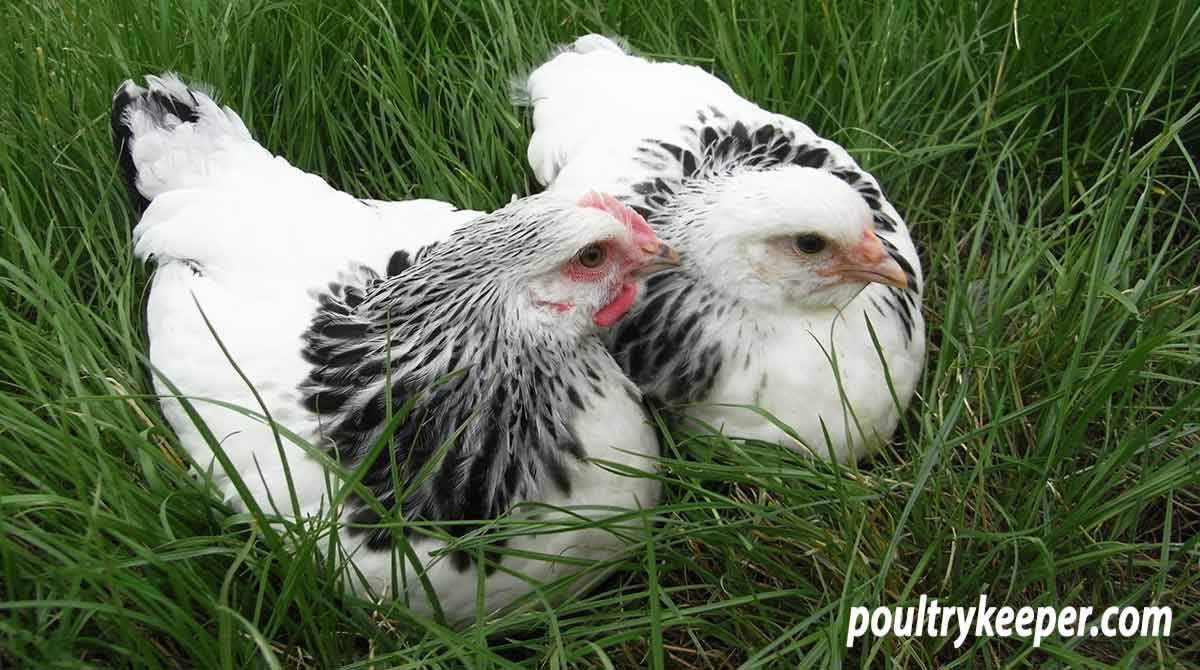
A popular question from people incubating and hatching eggs is how to sex chicks? – how can you tell if they are male or female? Sexing chicks while young isn’t easy, but as they start to grow, there are some tell-tale signs to look out for, which I will describe in this article.
Without a doubt, I would say it’s only experts who can sex day-old chicks (unless they are an autosexing breed or sex-linked cross). I always worry about sexing my chicks too early, and I have noticed that I’m not alone. Breeders with many years of experience in backyard poultry don’t take chances vent sexing chicks because it’s so easy to make a mistake.
Vent sexing
In days gone by, before sex-linked hybrids were introduced, commercial hatcheries employed ‘chick sexers’ who could inspect the chick’s vent and decide whether it was male or female. Some of these people would travel from farm to farm, and if they were accurate and quick at their job, they could earn high wages.
Whilst you will find drawings of male and female chick vents online (and there are many variations to the male and female), vent sexing is probably best left to a tiny number of experts who have had years of practice.
There are a few exceptions to the rule where chicks can be sexed easily at day old, and that’s thanks to autosexing and sex-linked crosses.
Sex-linked crosses
Sex linkage is where parents of two different pure breeds with different colour genes will produce different coloured male and female chicks at hatching.
The usual practice is a ‘genetically gold’ male on ‘genetically silver’ females (e.g. Rhode Island Red X Light Sussex) which results in the male chicks being silver and female chicks being gold. This is how commercial laying hybrid hens are produced. Male chicks can be culled at day old to keep rearing costs down. These birds will not breed true, unlike the autosexing breeds.
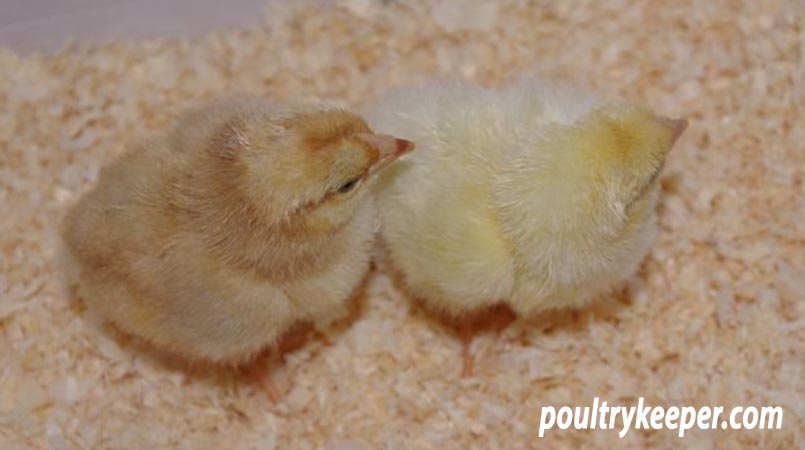
There are other forms of sex linkage. Crossing a black male to a barred female or dark-eyed males with light-eyed females.
Recommended reading:
Grant Brereton's excellent book, 21st Century Poultry Breeding explains sex linkage, and other more complex breeding matters in a way that's easy to understand.

Sex linkage has been used to our advantage since the late 1920s to produce several autosexing breeds of poultry.
Autosexing breeds
Autosexing chicken breeds reproduce chicks in which the chick has a distinctive down according to its sex. Chickens such as the Rhodebar or Cream Legbar are examples, producing chicks that have different down colour.
The photo below shows the difference between male and female Cream Legbar chicks that I hatched.
Aurosexing breeds are pure breeds of poultry, they breed true and are standardised.
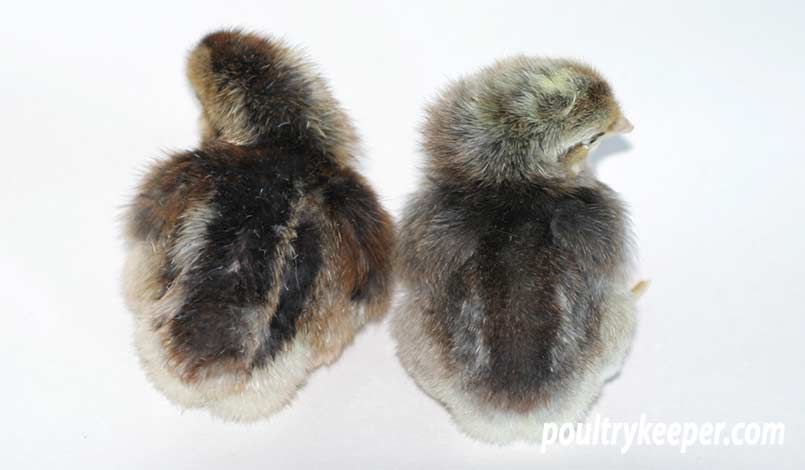
Other pure breeds
The remaining pure breeds that aren’t autosexing all look very similar, and it is difficult to determine which are male and female until about eight weeks of age. Even at eight weeks, it is easy to get it wrong if one bird is developing faster or slower than the others.
At eight weeks, though, and with a reasonable number of birds, you should start to notice some differences within the group.
There are certain looks, mostly around the comb and wattles area and tail/back feathers, but this can be more or less obvious in different breeds and isn’t totally reliable for sexing chicks. For the first few hatches, I recommend you ring birds you suspect are male and check your success rate at sexing chicks first!
If you know how to sex chicks, you can observe them and build up some degree of confidence before you make firm decisions. There will be different behaviours between the male and female. This starts around 3 weeks of age until by 12 weeks; young males are strutting around, sparring with one another and crowing!
Sexing chicks: what to look for
So here are my tips for what to look out for in male and female chicks. Between five and eight weeks is about the earliest I would consider sexing chicks. I usually remove unwanted male chicks around 8 weeks.
You might be able to re-home a few male birds, but unfortunately, you may also need to cull some too. Sadly, it’s a fact we have to accept if we are going to breed poultry.
The neck dislocation method is still the best way to kill a chicken and the only humane option for most small scale hobby keepers. If you’re breeding a lot of birds, you might want to look at buying a captive bolt gun, although I have found it hard to find the right kind for sale here in the UK.
The ‘pliers’ or wall mounted dispatchers crush the neck and are not recommended by the Humane Slaughter Association.
1. Back and Tail Feathers
Back and tail feathers on cockerels will be more pointed, pullets will have slightly more rounded feathers on the ends.
2. Tails
Together with the feathering, cockerels tend to have slightly longer tails than pullets, although it can be the other way around for some breeds, so it’s best to get to know the breed in question.
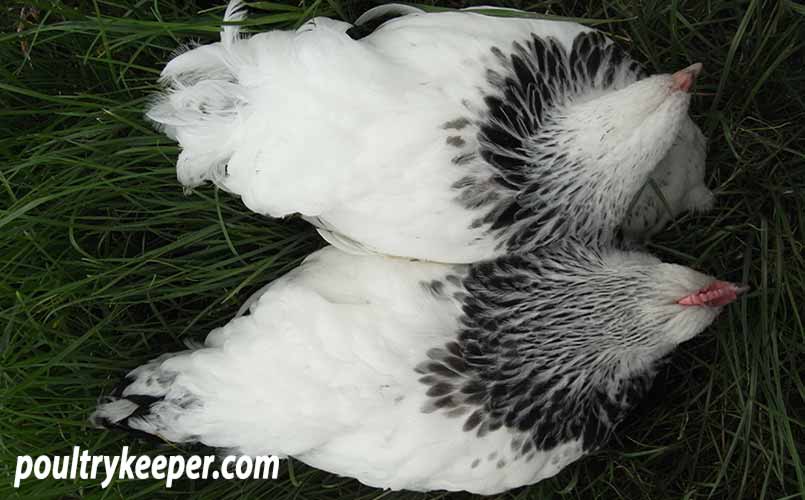
3. Wattles and Combs
Probably the most obvious of all is the faster growth and the brighter red colour of the boy’s wattles and combs from about 5 or 6 weeks (easier in breeds that have larger combs).
Don’t rely on this factor alone; I have often mixed up cockerels and pullets; it isn’t definite but usually a pretty good indicator, especially if cross-checked with other signs.
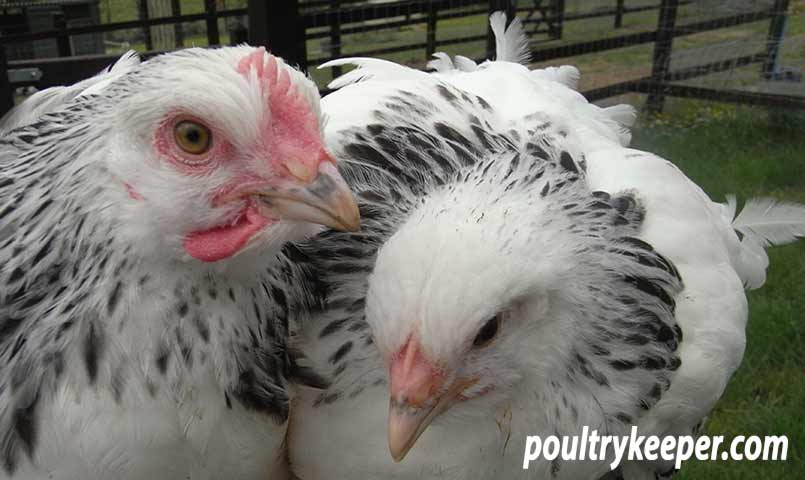
4. Behaviour
Chicks will spar with one another from around 6 weeks of age, but cockerels will do this more often and start to stand tall, pushing their chests out, showing typical male ‘strutting’ behaviour.
Often male chicks will raise their hackles as they assert their dominance over other chicks or when startled/approached.
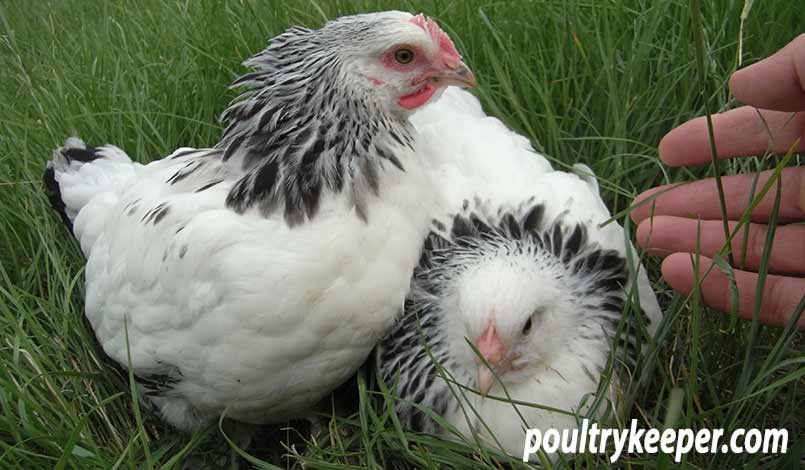
5. Size
Male chicks are usually larger than the female, and simply handling them can give you a good idea of their sex; however, if you look at their legs and feet, this can also be a good indicator as the boys tend to have stocky legs and bigger feet.
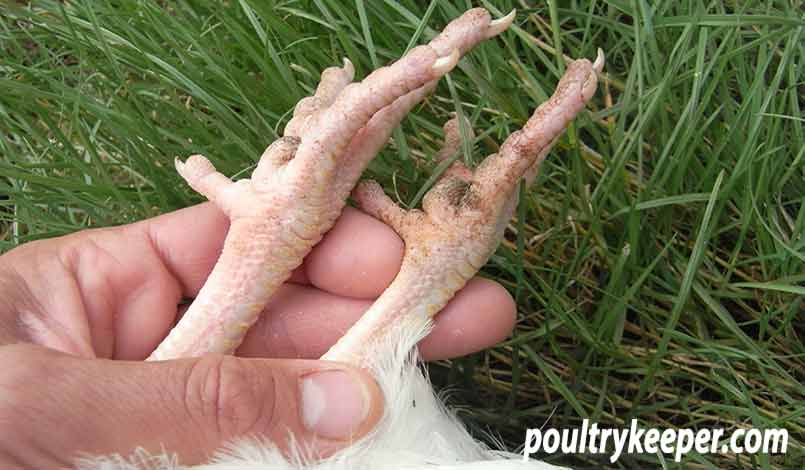
6. Crowing
Eventually, by 8 to 10 weeks, young cockerels will start crowing. The trouble is, at first, it’s a small screech and it takes weeks of practice to get to a full cock-a-doodle-do, so unless you see which bird it was, you may miss it!
If you're still unsure?
Why not wait a little longer? The cost of feeding males for a few more weeks is ultimately cheaper than dispatching a pullet by mistake!
Do you have any tips on how to sex chicks? Perhaps specific to a breed? I look forward to your comments below.

